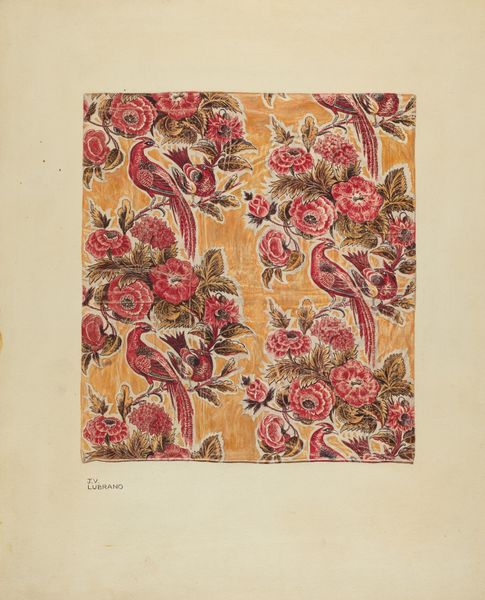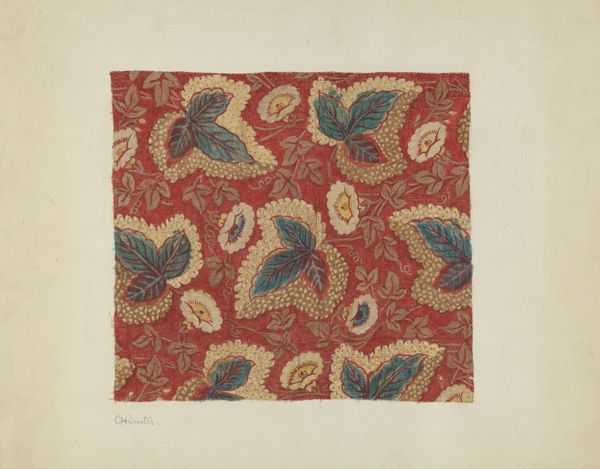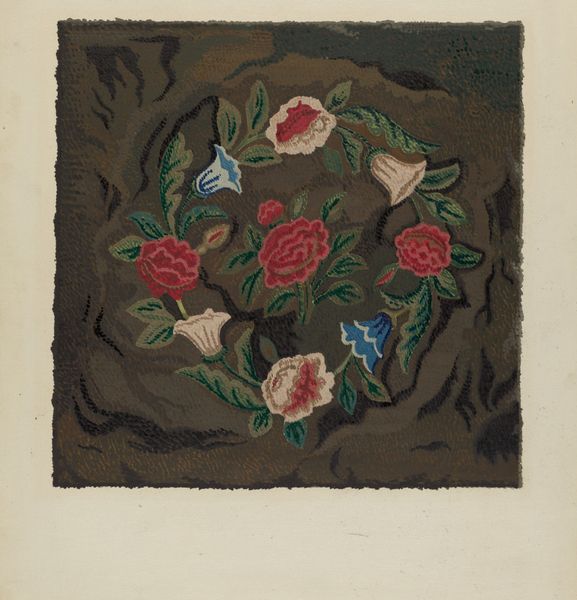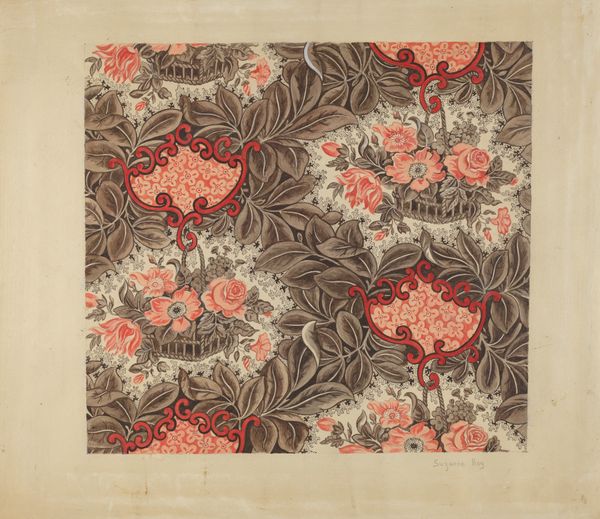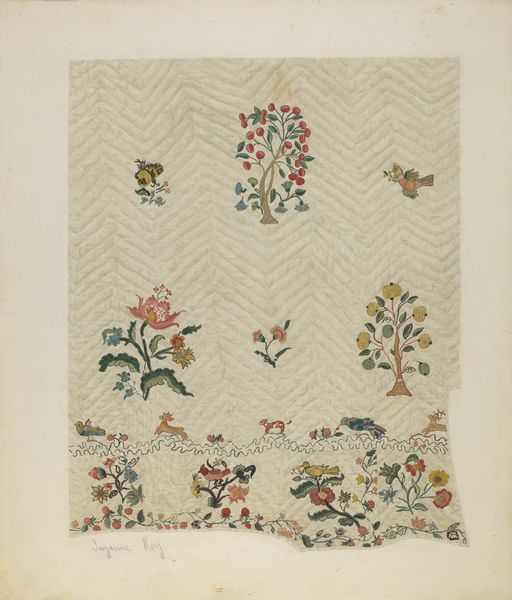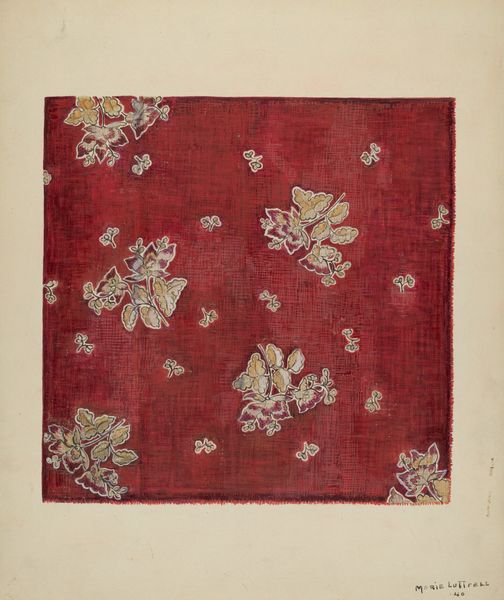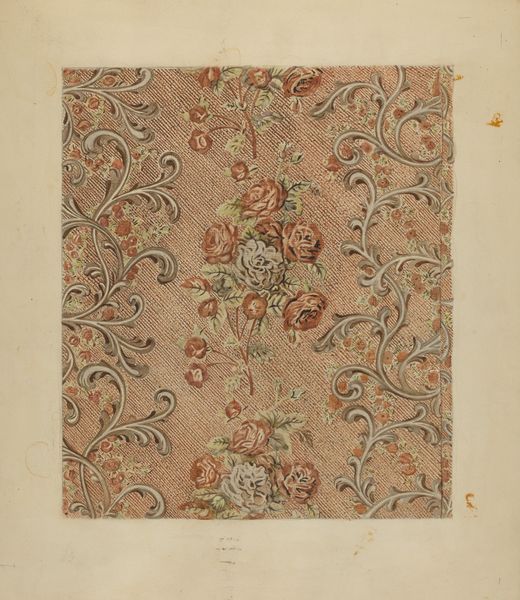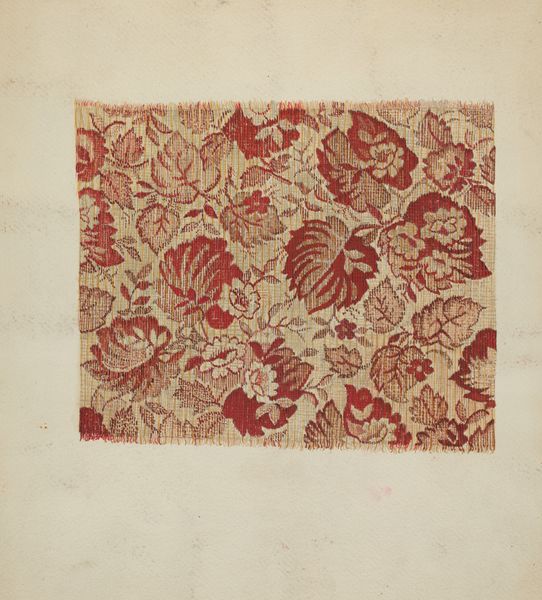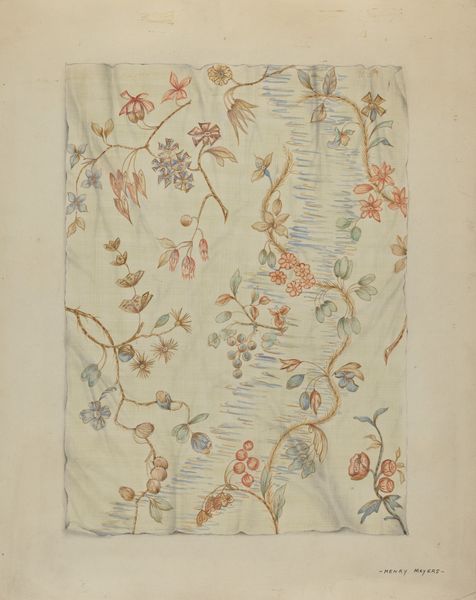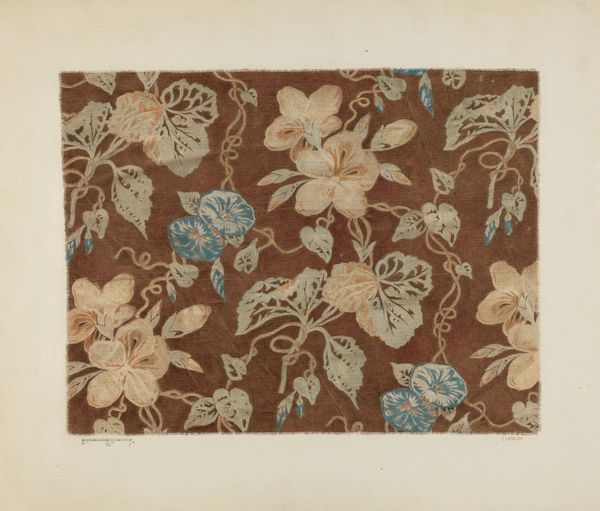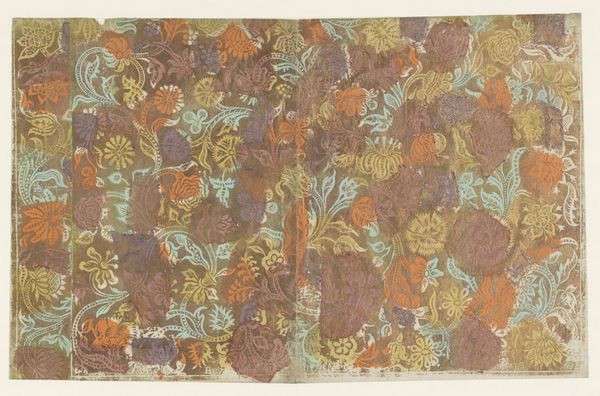
drawing
drawing
water colours
folk-art
Dimensions: overall: 26.6 x 24.2 cm (10 1/2 x 9 1/2 in.)
Copyright: National Gallery of Art: CC0 1.0
Editor: We’re looking at Marie Lutrell’s "Calico" from 1939, done in watercolor. The tight, repeating floral pattern feels almost like wallpaper. How do you interpret this work? Curator: I see this work as situated within the historical context of the interwar period, a time when domesticity and traditional feminine roles were often reinforced, but also subtly interrogated. The choice of "Calico", often associated with inexpensive textiles, along with the medium of watercolour, considered a "feminine" art form, could be interpreted as both an embrace and a critique. Editor: A critique of what, exactly? Curator: Perhaps a critique of the limited roles available to women during that time, a commentary on the tension between prescribed domesticity and the desire for individual artistic expression. Lutrell’s deliberate arrangement and the visual labor invested in this design elevate the medium and challenge the perception of mere decoration. Editor: That’s interesting! I hadn't considered that angle. It feels like more than just a pretty pattern now. Were there any specific art movements that influenced this kind of work? Curator: We can relate this work to the Pattern and Decoration movement that pushed back against the stark minimalism and patriarchal art history narratives of the previous generations. By reclaiming supposedly ‘low’ art forms like textile design, artists subverted the established hierarchies of the art world. This drawing serves as an insight into this history. Editor: So, it's both pretty and political. I appreciate seeing that connection now. Curator: Precisely! By analyzing it within the socio-political and art historical context, "Calico" offers an intersectional narrative about gender, class, and artistic expression.
Comments
No comments
Be the first to comment and join the conversation on the ultimate creative platform.
